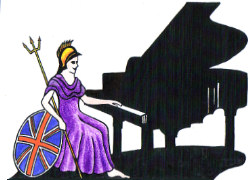Teachers, Accompanists and Piano Entertainers in the UK

UK Piano Page

Browse Locations England » Gloucestershire » Nailsworth
194 Penn Road
High Wycombe, Buckinghamshire HP15 7 NU
England
Sell both new & used pianos, superb choice of 75
Woodview Throckmorton Road
Throckmorton
Pershore, Worcestershire WR10 2JY
England
We are a well-established, friendly, family run
94 Tilehouse Street
Hitchin
Hitchin, Hertfordshire SG5 2DW
England
We stock Fine Quality instruments, modern second-
251 Kings Road
Chelsea
Chelsea, London
England
Chelsea London was founded on the famous King's
184 St. Ann's Road
Haringey, London N15 5RP
England
J. Reids supply new and fully restored pianos from
Music Festival for performers and guests Our 10th
18-06-2022 01:30PM
The Morecambe Bay Piano Group was set up to extend
11-12-2021 02:00PM
The Morecambe Bay Piano Group was set up to extend
08-01-2022 02:00PM
The Morecambe Bay Piano Group was set up to extend
12-02-2022 02:00PM